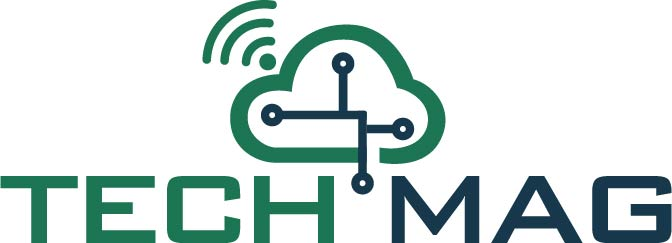
The U.S. institutional cleaning ingredients market is anticipated to witness significant growth over the coming time period due to rising demand for non-chlorine bleach agents in detergents, increasing use of magnesium stearates in detergent making, and surging use of organic ingredients as an alternative for chemicals.
The ingredients used in cleaning products usually fall into numerous different categories, and are added to the cleaning product to provide different features as well as functions.
The U.S. institutional cleaning ingredients market is segmented in terms of ingredients type and application.
In terms of ingredients type, the U.S market for institutional cleaning ingredients is categorized into preservatives; chelating agents; emulsifiers, binders and antimicrobials; water softeners; bleaching agent; enzymes; surfactants; and others.
Get sample copy of this research report @ https://www.decresearch.com/request-sample/detail/5024
Among these, the surfactants segment is classified into amphoteric surfactants, anionic surfactants, nonionic surfactant, and others such as cationic surfactant. Anionic surfactants segment is likely to expand at a CAGR of more than 2.2% over the forecast time period. These mostly have a negative charge on their hydrophilic end. The negative charge further aids the surfactant-based molecules to lift as well as suspend soils in micelles.
Since they are able to attack a broad range of soils, these types of surfactants are used commonly in detergents and soaps. Some common examples of anionic surfactants include gluconates, sulfonates, and sulfates.
Amphoteric surfactants segment is anticipated to reach a valuation of approximately $13.26 million by the end of 2025. Some examples of amphoteric surfactants are amino oxides and betaines.
The others segment, which covers cationic surfactants, is anticipated to grow with the CAGR of 3.2% over the forecast time period. Cationic surfactants usually have a positive charge on their hydrophilic end which makes them very useful in anti-static products, such as fabric softeners. These surfactants can also serve as antimicrobial agents, thus are often used in disinfectants.
The enzymes segment is categorized into protease, amylase, cellulase, lipase, and others. Here, the lipase segment is expected to reach around $11.70 million by the end of the analysis timeline. Cellulase segment will grow at a CAGR of about 6.4% through the forthcoming time period.
Meanwhile, the amylase segment is expected to reach a valuation of $39.44 million by the end of 2025 attributable to expand at a CAGR of 5.7% throughout the forecast period. This kind of enzyme is used in dishwashing detergents and laundry detergents.
The overall market from protease segment is likely to reach $24.72 million by the end of the analysis timeline. Proteases are known to be the most commonly used enzymes in the detergent industry. They generally remove protein stains like human sweat, egg, blood, and grass. The others segment is likely to witness a CAGR of over 4.8% through the forecast time period.
The bleaching agents segment is classified into sodium percarbonate, hydrogen peroxide, and others (tetraacetylethylenediamine). Among these, the hydrogen peroxide segment will reach more than $3.30 million by the end of 2025. In homes, this ingredient could also be used to help remove mildew as well as mold stains from dishwashers. Sodium percarbonate is likely to exhibit lucrative growth over the coming time period due to growing demand for non-chlorine bleach agents in detergents.
Water softeners segment is bifurcated into sodium metasilicate, trisodium phosphate, sodium chloride, sodium carbonate, and others including sodium polyacrylate and benzotriazole among others. Sodium carbonate segment is expected to reach $0.71 million by the end of the analysis timeline. The segment is further expected to grow at a CAGR of 5.4% throughout the forecast period. Sodium chloride segment shall exhibit a CAGR of more than 4.7% through the forthcoming time period.
Request For TOC of Report @ https://www.decresearch.com/toc/detail/u-s-institutional-cleaning-ingredients-market
Meanwhile, the rising demand for commercial detergents may stimulate the trisodium phosphate market growth. Subsequently, growing demand for detergents to prevent mineral deposits on surfaces is expected to boost the use of sodium metasilicates as detergent ingredient. The others segment is expected to reach $0.90 million valuation by the end of 2025.
Emulsifiers, binders and antimicrobials segment is categorized into magnesium stearate, glycerin, and polyethylene glycol. Among these, the polyethylene glycol segment is anticipated to reach $1.97 million by the end of the analysis timeline. Glycerin segment is projected to grow at 4.2% CAGR over the analysis timeline.
Meanwhile, the growing use of magnesium stearates in detergent making due to their emulsifying capabilities is likely to proliferate the market growth.
The chelating agents segment is categorized into phosphonates, polycarboxylates, nitrilotriacetic acid, citric acid, and others. Surging use of organic ingredients as an alternative for chemicals is expected to fuel the utilization of citric acid in detergent making.
Nitrilotriacetic acid segment is projected to reach approximately $0.53 million by the end of the forecast time period. Whereas, the polycarboxylates segment is anticipated to exhibit a 4.2% CAGR over the forthcoming time period. The other segment is expected to reach $56.09 million valuation by the end of 2025.
The preservatives segment is segmented into formaldehyde, sodium benzoate, and others including phenoxyethanol. The others segment will witness a CAGR of around 4.1% over the forecast time period.
